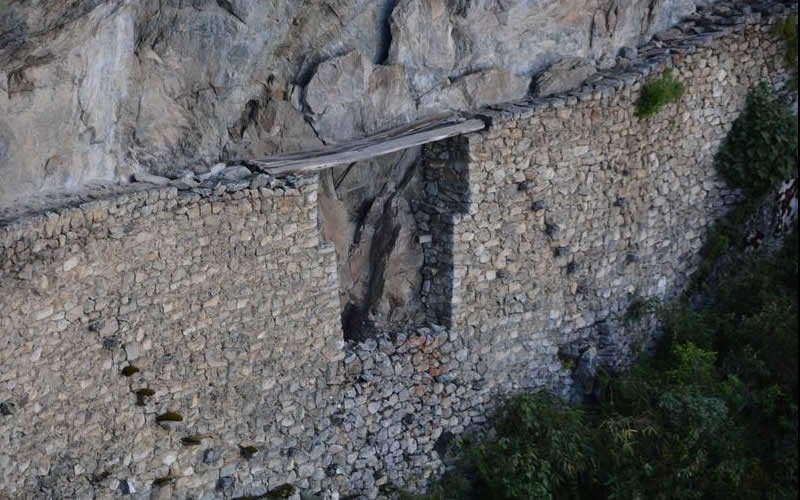The mystery behind the Inca civilization’s legacy has certainly left traces that are hard to follow but not impossible. Many facts surge as we confirm the information that we inherited from antique western researchers, the so-called chronists.
Certainly the feats that Incas were able to reach are envyable even by today standards, we’re talking about a population that hardly suffered from hunger, internal disputes over regional control and the list goes on.
For this article we’re going to focus on one of the components that allowed this unrepeatable organization to be as efficient as it was. This certainly depended on the ease that communication across the Empire’s vicinity represented and how this was developed after the greatest South American civilization was finally conquered.
Let’s delve into the Inca and Colonial Bridges in the Inca capital, Cusco.
Q’eswachaka Bridge
The Q’eswachaka bridge is the Incas’ very last suspension bridge. It is 28 meters long and 1.2 meters wide, and it runs gracefully over the Apurimac River gorge. One of the most remarkable aspects of the Q’eswachaka Bridge is that community members from four groups – Huinchiri, Chaupibanda, Choccayhua, and Ccollana Quehue have been rebuilding it for years.
Every year, people from the four communities come together for a few days to weave this by hand out of straw and other raw materials. When the weaving is finished, the people celebrate it grandly to demonstrate their harmony, communication, and the strength of cultural traditions.
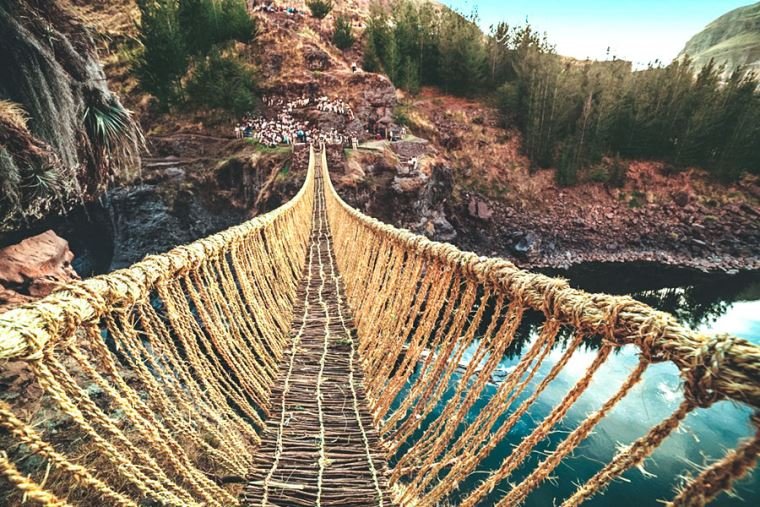
Checacupe Bridges
Inca Bridge of Checacupe
The Inca Bridge of Checacupe was built in the 1400s by locals following orders from the Inca Sapa Wiracocha. The goal of this bridge was to improve the road network between Checacupe and other neighbouring villages. This eventually made trade and transportation of goods easier. This bridge, like the Q’eswachaka Bridge, is made of straw and is regularly renewed by the locals.
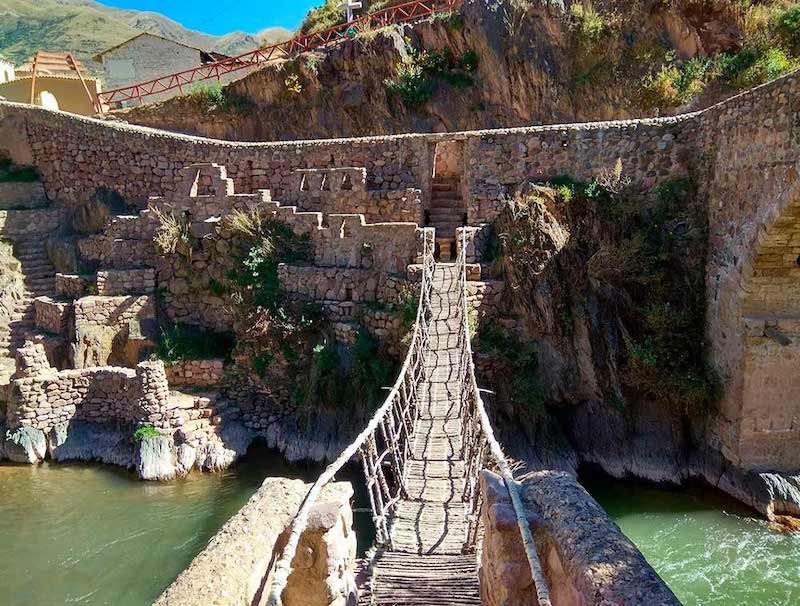
Colonial Bridge of Checacupe
The Colonial Bridge of Checacupe, as the name suggests, was built by the Spanish on the orders of King Carlos III of Spain between the 1750s and 1790s. This Colonial Bridge was built to transport coal from Arequipa to Cusco. The design is very different from the Inca Bridges. It has Roman-style arches made of ashlar stone and merged with limestone.
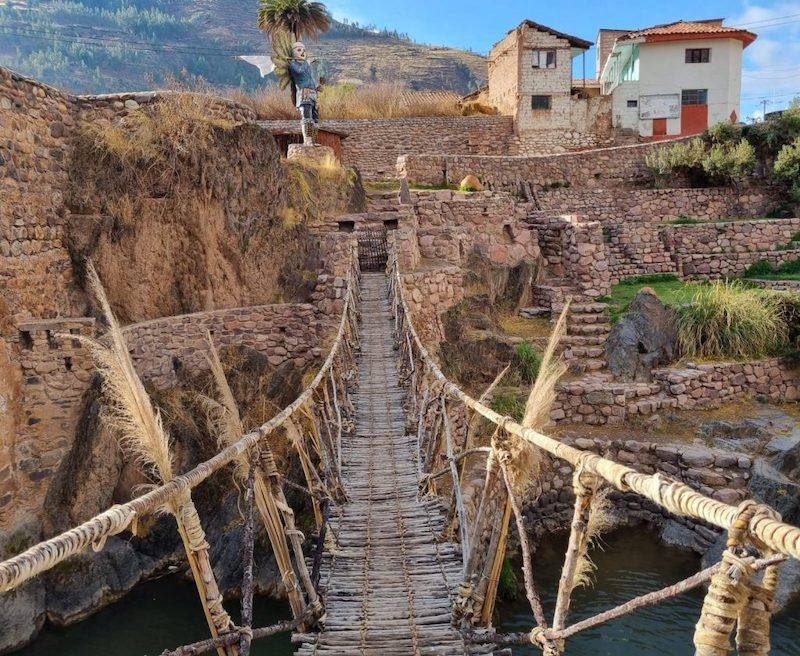
Republican Bridge of Checacupe
The Republican Bridge of Checacupe is unlike any other bridge in Cusco. It was built in 1895 on the orders of the then-President of the Republic, Ramón Castilla. The Republican Bridge of Checacupe comprises of iron and metal frameworks.
It was originally used to transport coal. However, it is now the primary means by which locals travel to Checacupe from neighbouring areas.
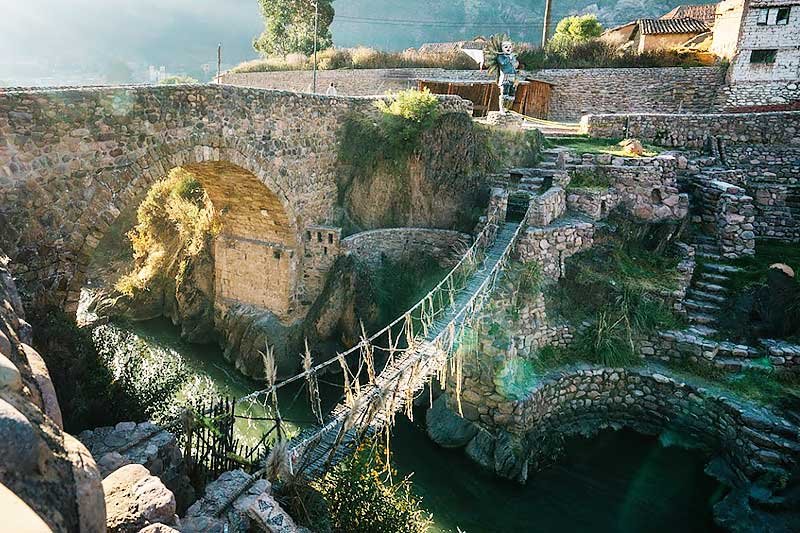
The Carlos Tercero Bridge of Paucartambo
The Carlos Tercero Bridge in Paucartambo creates a quaint atmosphere as it crosses the Mapacho River. In comparison to the Republican Bridge of Checacupe, this bridge has an Ogival arch with a 34-meter length and 5-meter width. It was built under the orders of King of Spain Carlos III in 1775.
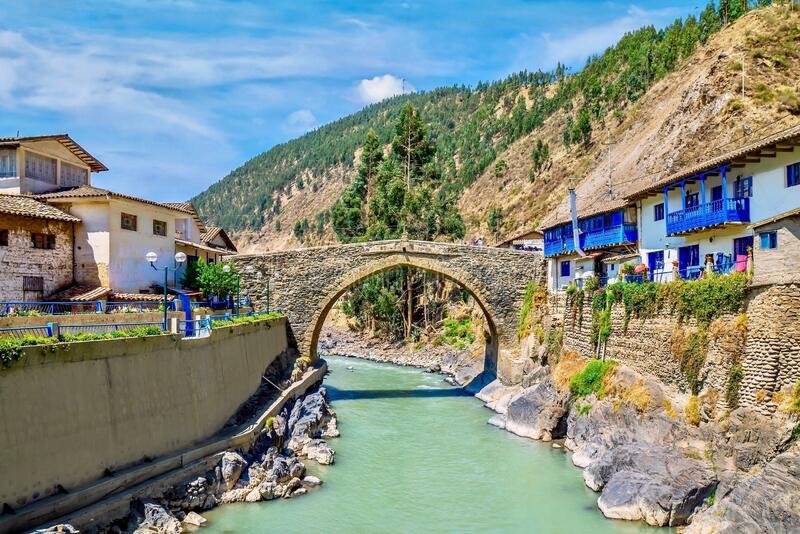
The Inca Bridge of Machu Picchu
The Inca Bridge of Machu Picchu is finished with five-meter-long wooden logs that are held in place by two stone walls. Since the cliffs provided a strategic location, the bridge must have served as a defensive route for the Incas.
In the event of an enemy attack, all they had to do was remove the wooden logs. There was no other way to cross to the other side. While little is known about when it was built, the Inca Bridge is a magnificent structure when its geography is considered.
